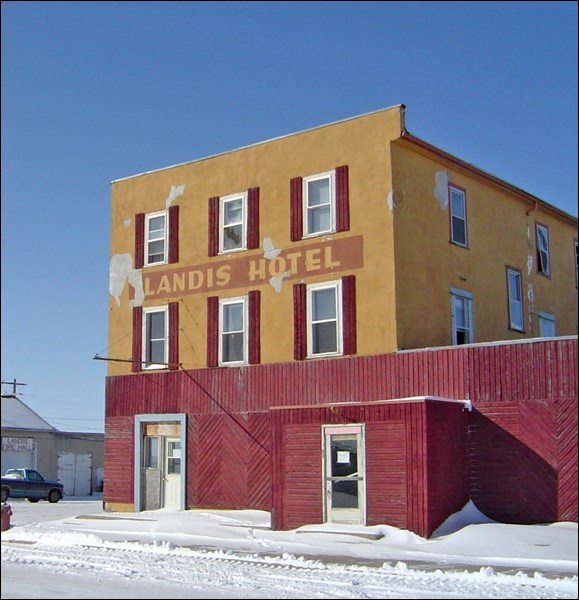Every Saskatchewan hotel built on the corner of “Railway and Main” has a story. The stories of the Landis Hotel, recorded in the town’s local history book, are truly compelling, and sad.
Noble and Gertrude Woodworth came to Landis in 1917 and decided to run the hotel. Built in 1909, the hotel had been in a slump since the start of Prohibition in 1915. To make matters worse, the Spanish Flu hit the village of Landis in the fall of 1918. An emergency influenza hospital was set up in the Landis Hotel.
The flu epidemic started in the trenches at the end of the First World War in May 1918. It spread across the Atlantic as troops returned to Canadian ports that summer and reached Saskatchewan on Oct. 1, 1918. Infected soldiers bound for home disembarked from troop trains in Regina and from there, the flu spread rapidly throughout the province. Almost 4,000 Saskatchewan people died during the first three months of the epidemic, and the largest number of deaths occurred in villages.
So severe was the epidemic in Landis that literally every household in the village and district was stricken. The Landis Record reports that schools and businesses were closed, “and it was difficult to find enough able-bodied people to tend the sick.” Many people from Landis and area died, some as patients in the hotel.
In December of 1918, the Woodworths retreated to a quarter section of land on the outskirts of town. Their two-room shack, with no conveniences and with straw and manure banked up around the foundation to keep the place warm, was likely a refuge from the sickness and sadness they had witnessed during their short tenure at the Landis Hotel.
In 1919, when Anna Haas was 19 years old and working as a seamstress for the GWG Garment Company in Winnipeg, her parents, Adam and Mariana Haas, moved to Landis. Perhaps they thought that running the village hotel would be a good opportunity for Anna, for she arrived shortly afterwards. Two years later, Anna gave up the hotel business and returned to work for GWG. She was “stricken with a mental disorder” in 1928 and was committed to the Weyburn Mental Hospital where she lived for 50 years, dying at the hospital in 1978 at age 78. She is buried in the Landis cemetery.
John MacLeod, his wife Mary Ann, and their six children took over ownership of the Landis Hotel in 1923. Their son Hector, who had been working in the hotel since 1930, bought the business in 1951 and ran it until 1961.
In 1952, Hector converted the hotel’s dining room into a café and hired Woo Sing Kee to run it. Mr. Sing had a wife in China, but Canada’s restrictive immigration laws prevented him from bringing her to join him in Saskatchewan. Instead, two men, Wing Woo and Wah Woo, worked with Mr. Sing in the café. The Chinese Immigration Act was repealed in 1947, but it wasn’t until 1958 that Mr. Sing’s wife finally joined him in Landis. Mr. Sing died two years later. His wife continued to live in the Landis Hotel, with Wing Woo and Wah Woo looking after her until her death in 1968.
By 2006, the Landis Hotel was abandoned and empty – open to vandals and the elements. The hotel was torn down a couple of years later.



